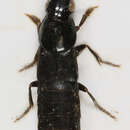en
names in breadcrumbs


Materials.
UNITED STATES: VT: Bennington Co., Woodford, sifting leaf litter near stream, 1-IV-2010 , T. Murray (1).
CANADA: ON: ‘Ont.’ , 30-IX-1982 , G. Abayo (1); Halton Reg., Oakville, nr hwy 25 and Burhamthorpe Rd., meadow, yellow pans, 12 to 14-IX-2003 , S.M. Paiero (1); Hamilton Reg., Hamilton, 3-VIII-1984 , M.T. Kasserra (1); Waterloo Reg., Blair, Fountain St. S. nr Speed River, 43.391, -80.373, hedgerow, pitfall, 28-IX-2009 , A. Brunke (1); Wellington Co., Eramosa, Wellington County Rds. 124 and 29, 43.615, -80.215, hedgerow, pitfall, 4-V-2010 (1), 18-V-2010 (1), 2-XI-2010 (1), A. Brunke; Guelph, 17-VIII-1976 , David Levin (1); Guelph, 7-VI-1983 , C.F. Langlois (1); Guelph, University Arboretum, hand collected, 16-III-1983 , L.B. Carlson (1); Guelph, 30-IX-1983 , A. Harris (1); Guelph, 5-VII-1984 , ‘maple’ , T. Young (1); Guelph, 3-IV-1991 , M. Kovacevick (1); Guelph, 14-X-1998 , T. Phillips (1); Guelph, Victoria Rd. and Conservation Line, 43.580, -80.275, hedgerow, pitfall, 19-V-2009 (1), 17-XI-2009 (1), A. Brunke.
Diagnosis. Quedius curtipennis can be distinguished from other northeastern Quedius by the combination of: elytra with even punctation; labrum not bilobed; scutellum impunctate; basal antennomeres not distinctly darker than the other segments (Fig. 13).
This exotic Palaearctic species was first correctly reported in North America by Korge (1962) who recognized that Quedius parallelus Hatch 1957, a species described from western North America, was synonymous with Quedius curtipennis Bernhauer 1908. Quedius curtipennishas been present in North America as early as 1934 based on specimens from Washington and also occurs in British Columbia and Oregon ( Smetana 1971 ). A separate introduction to the east was detected first by Smetana (1990) based on a New Hampshire specimen collected in 1983. Since then Quedius curtipennis has been detected in New Brunswick and Nova Scotia ( Majka and Smetana 2007 ). Herein we newly report it from Ontario and Vermont (Map 37) from specimens collected as early as 1976 and 2010, respectively. The record from Guelph, Ontario represents the earliest known collection in eastern North America. In its native range, Quedius curtipennis is widely distributed in the Palaearctic region ( Smetana in Löbl and Smetana 2004 ). Quedius curtipennis has been collected in Ontario mainly in disturbed habitat such as regenerating woodland, fields and agricultural crops.
Quedius curtipennis is a beetle found in Britain. It is similar in appearance to Quedius fuliginosus, which is a less common species, however, the eyes of fuliginosus are more convex and the basal antennal segments darker. The punctures on the elytra are slightly stronger in Q. curtipennis.[1]
Quedius curtipennis is a beetle found in Britain. It is similar in appearance to Quedius fuliginosus, which is a less common species, however, the eyes of fuliginosus are more convex and the basal antennal segments darker. The punctures on the elytra are slightly stronger in Q. curtipennis.